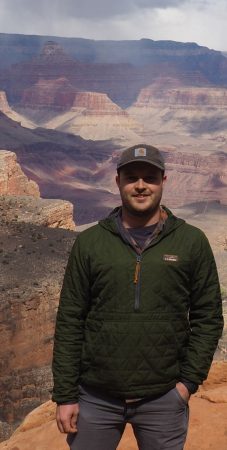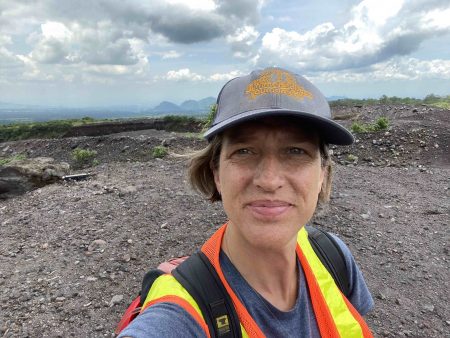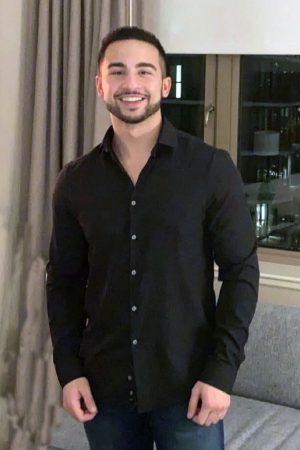Assistant Teaching Professor Luke Bowman (GMES, PhD ‘15) and Research Scientist Erika Vye (GLRC/GMES, PhD ‘16) represented Michigan Tech at the Geological Society of America’s annual meeting in Pittsburgh, PA, October 14-18, 2023. They participated in a session titled “Field-Based Geoscience Education: Advances in Research, Program Evaluation, Pedagogy, and Curriculum”.
Bowman shared an oral presentation titled “Community Involvement in Building and Testing A Flash-Flood Model for Simulating Flood Frequency” (with co-authors Natalea Cohen (GMES, MS ‘23), John Gierke, Vanessa Bailey, Hannah Lukasik, Shannon McAvoy, Mario Hugo Mendez, Susan Toivonen, and David Yates).
This research, which involves several MTU researchers and students, is part of a multi-year project that addresses climate change-induced, water-related challenges in the Central American Dry Corridor, focusing on agricultural community adaptations to extreme hydrometeorological events in El Salvador. This project is a collaboration of Michigan Technological University (MTU), CUAHSI, and Lutheran World Relief (LWR) in El Salvador, funded as a National Science Foundation International Research Experience for Students (IRES).
Geological Society of America Abstracts with Programs. Vol. 55, No. 6, 2023
doi: 10.1130/abs/2023AM-394917
Bowman also participated in a workshop on Positive Mental Health in the Geosciences sponsored by GSA and the Science Education Resource Center (SERC). The workshop shed light on the challenges experienced by many geoscientists, explored the common signs that indicate when geoscientists are struggling with their mental health, and showcased best practices to create a safe and supportive working environment.
Vye shared an oral presentation titled “The Keweenaw Geoheritage Summer Internship: Exploring Our Shared Relationships with Land and Water” (with co-author Amanda Gonczi).
Geological Society of America Abstracts with Programs. Vol. 55, No. 6, 2023
doi: 10.1130/abs/2023AM-395861
Vye also supported and co-authored two first-time student presentations in a session titled “The Stories of Geoheritage”: “Connecting Geology, Mining, & Fish Sovereignty in the Keweenaw” by Naomi Smith (Keweenaw Bay Ojibwa Community College),” and “Bridging Knowledges – Using Geospatial Technology to Support Place-Based Geoheritage Learning” by Steph Fones (University of Wisconsin-Milwaukee) with co-authors Daniel Lizzadro-McPherson and Naomi Smith. Fones and Smith participated in an 8-week Keweenaw Geoheritage internship at Michigan Tech in the summer of 2023. This work was supported by NSF Award # 2136139 – EAGER: Geoheritage and Two-Eyed Seeing – Advances in Interdisciplinary Earth Science Research, Learning, and Inclusion through Shared Ways of Knowing (PI Vye).
Geological Society of America Abstracts with Programs. Vol. 55, No. 6, 2023
doi: 10.1130/abs/2023AM-395218
Geological Society of America Abstracts with Programs. Vol. 55, No. 6, 2023
doi: 10.1130/abs/2023AM-395408
The Department of GMES also co-sponsored the Michigan Colleges/Universities Joint Alumni Reception at the GSA conference (together with Grand Valley State University, Western Michigan University, Hope College, Wayne State University, Eastern Michigan University, Albion College, and Central Michigan University). It was good to see and chat with our alumni, colleagues, and friends. This gathering was a testament to the enduring camaraderie within our geoscience community.



















